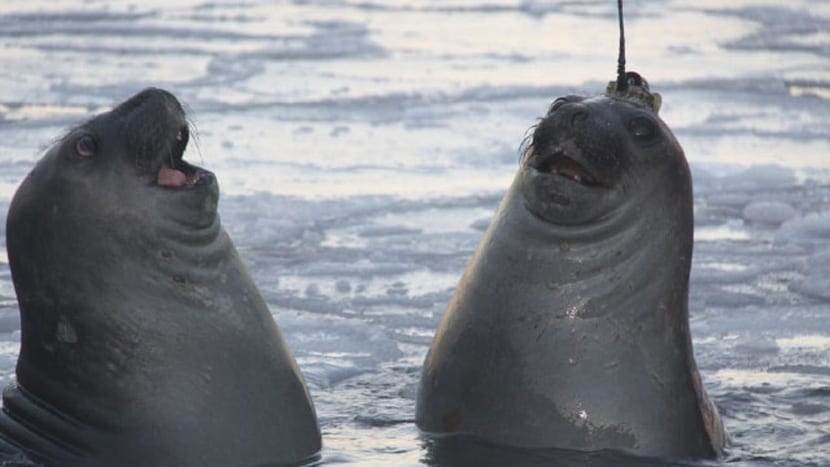
With temperatures found under 20 degrees centigrade And with a sea of ice more than a meter thick, the Arctic winter is totally a challenge for researchers who collect the most basic oceanographic data, such as the conductivity of the water, temperature and density.
For researchers like Guy Williams, who has been roaming these parts since 1999, and his colleagues, the data came from an unexpected source. Seals are capable of tracking the seabed and providing data that would otherwise be very difficult to obtain. Seals wearing micro-CTD devices that allows them to explore vertically the oceans, which means they can know everything about the structure of the ocean.
Designed by scientists at the University of St Andrews's, those devices are now able to track the movements of seals as they traverse the various marine environments. Weighing in the hundreds of grams, the devices are attached to the heads of the seals with a type of resin and stay that way until it is detached, which usually happens a year. The sensors are capable of measuring CTD and location data every four seconds and sending a portion of it via satellite.
You can see how they are crossing the Southern Ocean and those vertical profiles Taken when immersed in all kinds of colors. Williams and an international team were able to examine data collected from 2011 to 2013 by elephant seals. What allowed them to know that the region east of Antarctica was wrapped in a kind of cold water masses that helps to drive the circulation of nutrients and dissolved gases around the planet's oceans.
Not only was the revealed data left here, but they discovered that the ice shelves are keys to maintaining the system. Clean water rises from melting ice, hampering the production of those dense water masses over time, which could lead to slowing global ocean currents as the planet continues to warm. It is a key piece in the puzzle, according to the same oceanographers.
Of course seals can't solve everything, since they cannot swim under the ice shelves, but they are being able to provide vital data to understand ocean currents.